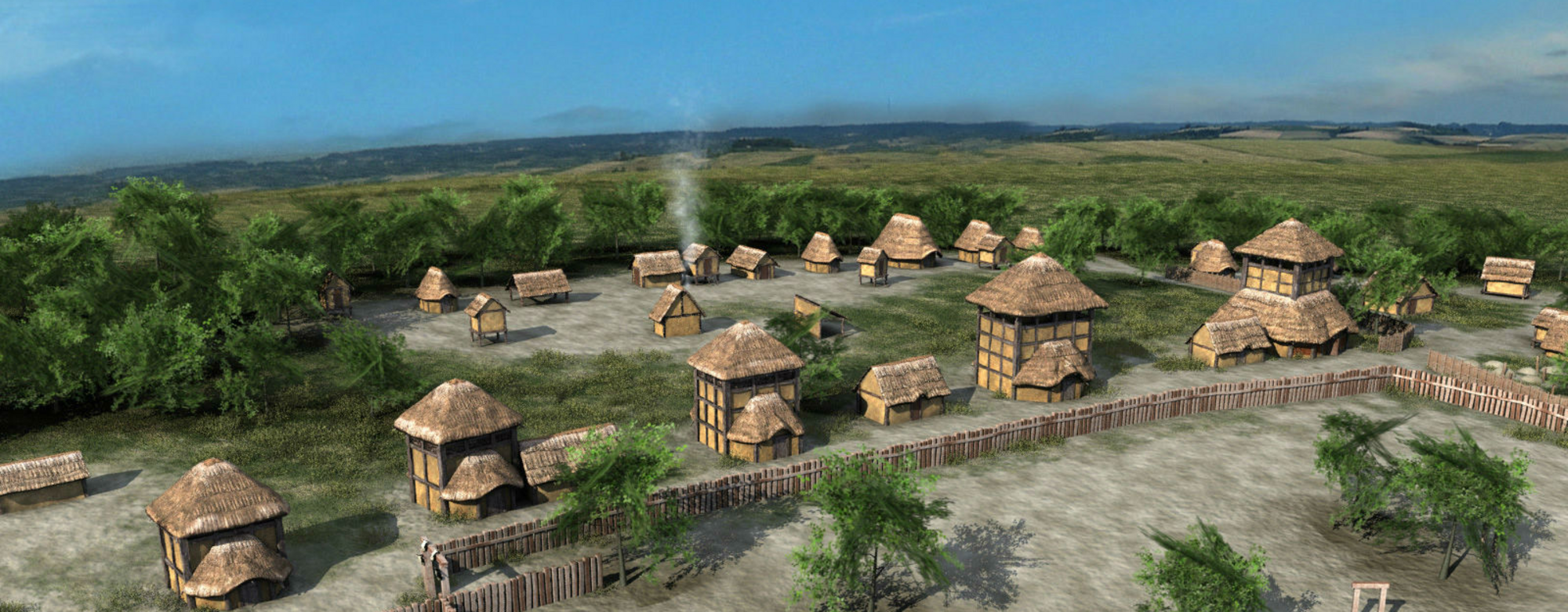
- Home
- The Gallic village
- Village life
The precise and perfectly ordered layout of the village shows a settlement organised around a large square enclosed by a palisade, with its specialist quarters arranged hierarchically and built around large spaces which appear to have been open. This is the static image of a place which was actually animated, changeable and noisy. The wide road entered the village from the southeast between wooded embankments, now partially worn away, and continued towards the entrance to the square, dividing the space in two. From there it split into two, one branch going between the temples and the square and on to the cemetery at "La Noue Mauroy" and then the Aisne, and the other continuing westwards out of the settlement towards the sacred site at Nanteuil-sur-Aisne. At its northwest exit it was bordered by a few large trees, others shaded the square. A grove of trees was left in the southern quarter, where the artisan blacksmiths and coppersmiths lived and worked. Domestic animals, pigs and poultry wandered between the houses and outbuildings, domestic units enclosed by lightweight fences. We can imagine the vegetable gardens, growing food for the kitchen, the sacred areas and all the open air activities one would expect in a living village. Herds of cattle and horses were kept in the valley, sheep kept the grass short and cleared the fallow land between the corn fields. On days when there were festivals, markets, sacrifices or banquets, neighbours and trading partners near enough to come would be invited along, and the village would be lively and noisy. The death of a notable figure would also have been an important event in the life of this village and the surrounding area.
Associated media
Open Media Library
